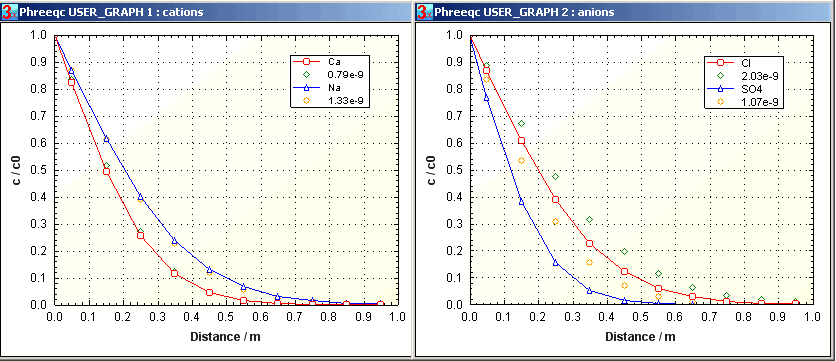
If seawater diffuses in a fresh water sediment, the cations diffuse approximately
at the speed of a tracer with the same tracer diffusion coefficient, irrespective
of its charge. Input file mcd_ex3.phr
calculates 3 years diffusion in a fresh water sediment, resulting in profiles of the major cations in USER_GRAPH 1 (lines),
and tracers with the same diffusion coefficient (points).
To maintain charge-balance, the anions diffuse slower than an uncharged tracer is
doing (compare lines and points in USER_GRAPH 2 for the anions). However, when the tracers
are given the charge of the anion, they diffuse with the speed of the major anion
(try it out!).
The different curves imply that the ionic ratios will change with distance if seawater diffuses in fresh water.

On the other hand, if seawater diffuses in a seawater-like solution, the difference between charged and uncharged tracers disappears also for the anions: all the tracers diffuse at the speed determined by the tracer diffusion coefficient because charging can be compensated with tiny velocity changes of the major ions. However, the tortuosity, the accessible porosity and the retardation may vary and these factors will affect diffusion of the individual species in a real sediment. Some of these effects are illustrated in the example on multicomponent diffusion of tracers in clays.